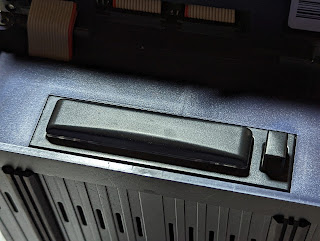On the lookout for a tapeless recording solution for my HDV cameras I spotted this old DataVideo DN-300 going cheap on eBay. It was described as having a faulty hard drive so I assumed I would be able to open it up, replace the drive and get the recorder working again.
However when I received it I realised that the DN-300 features a removable hard drive. Not something that was mentioned in any of the reviews. So the hard drive wasn’t faulty, it was completely missing. Along with the caddy/enclosure needed to mount it.
Of course DataVideo no longer have spares for this model in stock, and also they used a completely different drive enclosure in the DN-400 and newer models.
It was the change in caddy that gave me a clue how to find a solution. The hard drive slot in the DN-300 is really well built, and it seemed unlikely that DataVideo would develop a proprietary removable hard drive for this model then ditch it for the next… so the hard drive caddy had to be an off the shelf product.
A bit of Google searching and I was able to find the OEM version of the drive housing. It’s a StarTech 2.5 SSD/HDD rack with hot swap removable rack. These drives are also out of production, but I was able to find some for sale on Amazon US. Keeping my fingers crossed, I ordered one.
The package arrived in the mail a couple of weeks later and sure enough, the hard drive enclosure is a perfect fit for the DataVideo unit. All I needed to do was throw in a spare HDD and it was good to go.
































